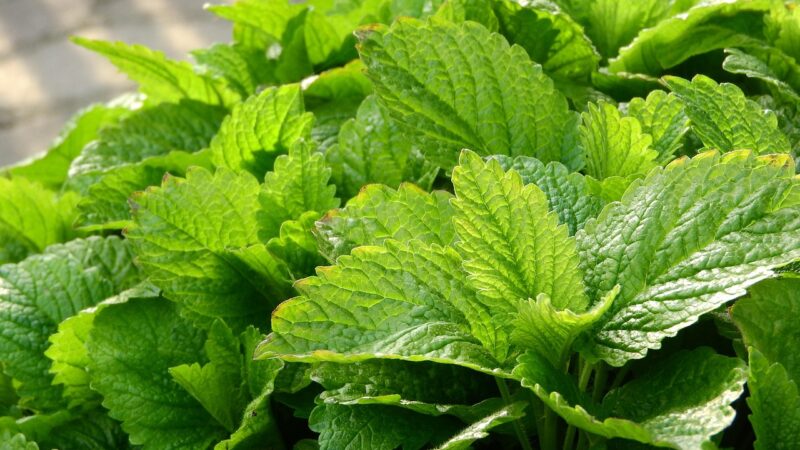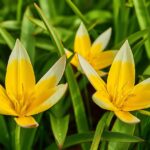The pruning and cutting back of lemon balm

Pruning is a vital horticultural practice that shapes the growth, enhances the health, and increases the productivity of many garden plants, and lemon balm is no exception. As a vigorous member of the mint family, this herb responds exceptionally well to regular trimming and cutting back. Far from harming the plant, proper pruning is a form of guidance, encouraging it to grow in a more desirable, bushy form and stimulating the production of fresh, tender leaves that are packed with the most flavor and aroma. This ongoing maintenance is key to managing its enthusiastic growth and ensuring a continuous, high-quality harvest.
The primary purpose of pruning lemon balm during the growing season is twofold: to harvest the leaves and to maintain the plant’s shape and size. Without regular trimming, the plant can become tall, leggy, and woody, with a tendency to flop over. Frequent harvesting acts as a form of pruning, constantly encouraging the plant to branch out from the base and produce new, succulent stems. This creates a more compact and attractive plant that is also easier to manage within the garden space.
Another critical reason for pruning is to prevent the plant from flowering and setting seed. While the small white flowers are attractive to bees, allowing the plant to complete its flowering cycle signals a shift in its energy allocation. It moves from producing flavorful leaves to focusing on reproduction. The leaves produced after flowering often have a less potent, almost soapy flavor. By cutting the plant back before it blooms, you effectively prolong its vegetative state, ensuring a season-long supply of prime-quality leaves for culinary use.
At the end of the season, a final, harder pruning prepares the plant for its winter dormancy. This tidies the garden, removes dead or potentially diseased material, and sets the stage for healthy new growth in the spring. Understanding when and how to prune your lemon balm throughout its life cycle is a fundamental skill that will reward you with a healthier plant and a more abundant harvest of its wonderfully fragrant leaves.
Techniques for seasonal pruning
Throughout the spring and summer, the best pruning technique for lemon balm is regular harvesting. You can begin to harvest leaves as soon as the plant is well-established and has reached a height of about 6 to 8 inches. There is no need to wait for the plant to reach full maturity; in fact, harvesting early and often is what keeps the plant productive. You can harvest by snipping off individual leaves or by cutting entire stems.
More articles on this topic
For a more substantial harvest that also serves as a significant pruning event, you can shear the entire plant back by about one-half to two-thirds of its height. This is best done with a clean, sharp pair of scissors or hedge shears. Make your cuts just above a set of leaves. This will encourage the plant to send out two new stems from that point, leading to a much denser and bushier plant. This type of hard pruning can be done two or three times during the peak growing season.
The ideal time to perform this shearing is just before the plant begins to form flower buds. By closely observing the plant, you can identify the subtle signs that it is preparing to bloom. Cutting it back at this stage captures the leaves when their essential oil content is at its peak and effectively resets the plant’s growth cycle. After a hard pruning, be sure to water the plant well to help it recover and fuel the flush of new growth that will follow.
This cycle of growth and pruning keeps the plant in a constant state of rejuvenation. The new growth that emerges after a cutting is typically the most tender and flavorful. By adopting a routine of regular harvesting and periodic shearing, you ensure that you always have a supply of high-quality lemon balm leaves on hand. This active management is the secret to getting the most out of this generous and fast-growing herb.
Preventing flowering and invasiveness
One of the most important goals of pruning lemon balm is to manage its reproductive cycle and its aggressive tendency to spread. Lemon balm spreads both by underground rhizomes and by self-seeding. Regular pruning plays a crucial role in controlling both of these mechanisms. By consistently cutting the plant back, you prevent it from developing the energy reserves needed to send out its spreading roots as aggressively.
More articles on this topic
The most critical pruning task for control is to prevent the plant from setting seed. Once the small white flowers appear, they are quickly pollinated and will develop a multitude of tiny seeds. These seeds are easily dispersed by wind and water, and they can germinate readily, leading to lemon balm popping up in unwanted places throughout your garden. To prevent this, you must cut the plant back before the flowers have a chance to mature and produce seeds.
Shearing the plant back just as the flower buds are forming is the most effective strategy. This not only stops the seed production cycle but also encourages the plant to put its energy back into producing leaves. If you miss this window and the plant does begin to flower, it is still beneficial to cut off the flowering stems as soon as you see them. While some of the leaves may have a diminished flavor at this point, removing the flowers is still essential for preventing self-seeding.
For gardeners who value the plant’s flowers for attracting pollinators, a compromise can be made. You can allow a portion of the plant to bloom while keeping the rest pruned for harvesting. At the end of the flowering period, be diligent about deadheading the spent flowers before they go to seed. This allows you to support local pollinators while still maintaining control over the plant’s spread and ensuring you have a good supply of culinary leaves.
End-of-season cutback
As the growing season winds down in the autumn, a final pruning is necessary to prepare the lemon balm for winter. This end-of-season cutback should be done after the first few light frosts but before the first hard freeze that will kill the top growth completely. The timing of this can vary significantly depending on your climate zone, but it generally falls in the late autumn. This final pruning is much harder than the seasonal trims.
Using a pair of sharp pruning shears or a scythe, cut the entire plant down to about 2 inches from the ground. This removes all the remaining foliage and stems from the season. This process, often called “tidying up,” is important for garden hygiene. The old stems and leaves can harbor fungal spores, such as those that cause powdery mildew, or the overwintering eggs of pests. Removing this material reduces the likelihood that these problems will reappear in the following spring.
The cut stems and leaves can be added to the compost pile, as long as they are free from any signs of disease. If you noticed significant mildew or other issues during the season, it is safer to dispose of the plant debris in the trash rather than composting it, to avoid reintroducing the pathogens to your garden later. This clean slate approach helps to ensure that the new growth that emerges in the spring is as healthy as possible.
After cutting the plant back, it is the ideal time to apply a layer of winter mulch, such as shredded leaves or straw. This mulch will protect the crown and the root system of the plant from the harshest winter temperatures. The short, 2-inch stems that you left behind will help to hold this mulch in place. This final act of pruning and mulching completes the annual cycle of care and ensures the plant is well-protected and ready to burst forth with new life when spring returns.


















